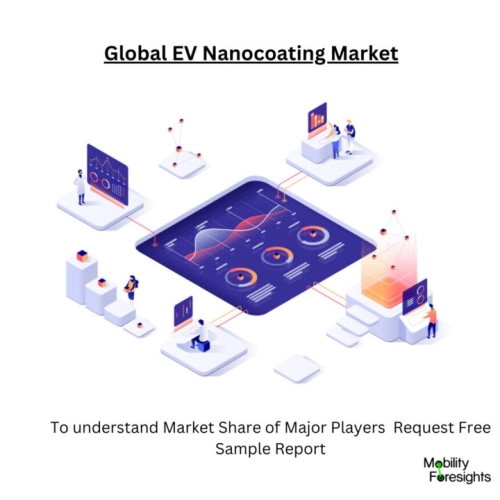
- Get in Touch with Us

Last Updated: Apr 25, 2025 | Study Period: 2023-2030
A surface layer that repels dry particles, water, oil, and dirt is applied using a procedure called nano-coating, also referred to as a ceramic coating. They are available in both liquid and solid form and have advantageous properties.
In terms of preserving a vehicle's paint from pebbles and scratches, paint protection film outlasts Ceramic Pro nano coating, but only when compared. Comparing products, Ceramic Pro performs better in terms of hydrophobicity, defence against harmful pollutants, and sensitivity to harsh chemicals.
When the maximum level of performance is required, coatings can range in thickness from extremely thin to those used on or near older technologies. There are numerous significant issues with their utilisation at their nanothicknesses, including abrasion and wear resistance, moisture and solvent.

The Global EV Nanocoating market accounted for $XX Billion in 2022 and is anticipated to reach $XX Billion by 2030, registering a CAGR of XX% from 2023 to 2030.
CAR coatings are known by a variety of names, including ceramic, nanotechnology, glass, and quartz coatings.The primer, base coat, and clear coat layers are the first ones that make up a vehicle's paint, which is what gives it depth and gloss.
In general, these coatings offer long-term protection choices, and they can be viewed as sacrificial layers that take the brunt of environmental damage in place of clear coat layers.
The biggest concern for many who buy new cars is to maintain them looking as good as they did when they first drove off the dealer's lot. But, despite your best efforts to wash and preserve the vehicle, there is always a risk that it will be exposed to stronger elements.
It is self-cleaning, so surfaces stay spotless, allowing for a reduction in the time and resources needed for upkeep.It resists corrosion; surfaces covered in nanocoatings exhibit little to no visible corrosion over an extended period of time.It is water-repellent; this ensures the protection of transparent surfaces while also defending textiles and other surfaces vulnerable to water damage.
Where weathering and water damage are prevalent, it is becoming quite popular with convertible tops. Due to the prolonged protection provided by nano-coating, frequent waterproofing will no longer be required.
| Sl no | Topic |
| 1 | Market Segmentation |
| 2 | Scope of the report |
| 3 | Abbreviations |
| 4 | Research Methodology |
| 5 | Executive Summary |
| 6 | Introduction |
| 7 | Insights from Industry stakeholders |
| 8 | Cost breakdown of Product by sub-components and average profit margin |
| 9 | Disruptive innovation in the Industry |
| 10 | Technology trends in the Industry |
| 11 | Consumer trends in the industry |
| 12 | Recent Production Milestones |
| 13 | Component Manufacturing in US, EU and China |
| 14 | COVID-19 impact on overall market |
| 15 | COVID-19 impact on Production of components |
| 16 | COVID-19 impact on Point of sale |
| 17 | Market Segmentation, Dynamics and Forecast by Geography, 2023-2030 |
| 18 | Market Segmentation, Dynamics and Forecast by Product Type, 2023-2030 |
| 19 | Market Segmentation, Dynamics and Forecast by Application, 2023-2030 |
| 20 | Market Segmentation, Dynamics and Forecast by End use, 2023-2030 |
| 21 | Product installation rate by OEM, 2023 |
| 22 | Incline/Decline in Average B-2-B selling price in past 5 years |
| 23 | Competition from substitute products |
| 24 | Gross margin and average profitability of suppliers |
| 25 | New product development in past 12 months |
| 26 | M&A in past 12 months |
| 27 | Growth strategy of leading players |
| 28 | Market share of vendors, 2023 |
| 29 | Company Profiles |
| 30 | Unmet needs and opportunity for new suppliers |
| 31 | Conclusion |
| 32 | Appendix |